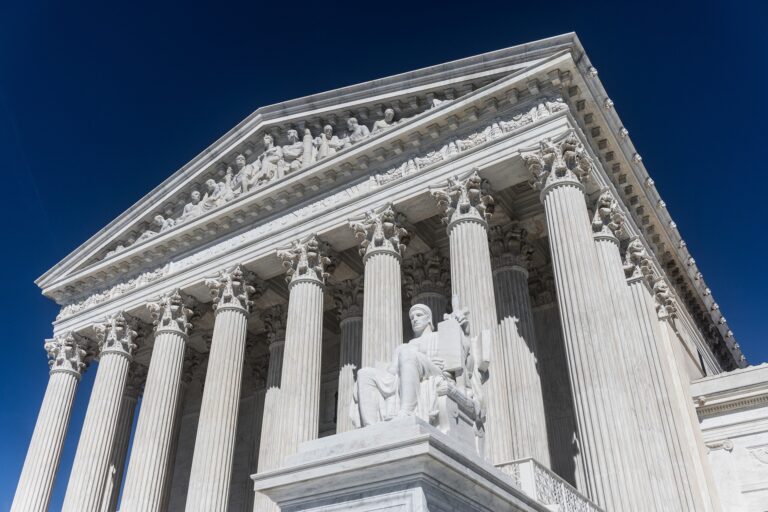Affirmative Action and the Search for Alternatives

By Brigid Harrington
The Supreme Court may ban race-based affirmative action for college admissions this year. But that does not mean schools will abandon their diversity goals.
As administrators wait for the high court to issue its final decision in two key affirmative action cases, they are figuring out how they can continue to create the heterogenous campuses they want.
It is not an easy task. In an effort to increase racial diversity on campus, many colleges already have experimented with changing early action and legacy rules to no avail. “There is no replacement for being able to consider race,” Olufemi Ogundele, University of California Berkeley’s dean of admissions recently told The Washington Post. “It just does not exist.”
Still, schools are searching for viable alternatives. The justices signaled during oral arguments last fall that they were ready to overturn their 19-year-old ruling that allowed race to be a factor in admissions decisions. Even back in 2003, the court maintained that race was not the ideal way to achieve diversity, saying racial preferences would no longer be necessary within 25 years.
In the two cases currently before the court, Students for Fair Admissions sued Harvard University as well as the University of North Carolina (UNC), arguing that it was unconstitutional to use race as part of the holistic admissions process. The court is expected to issue its ruling in June.
Judicial scholars expect that the court will make no distinction between public and private universities, banning affirmative action for nearly every school. Groups that filed amicus briefs in the current cases argued for two exceptions: for certain faith-basedschools, which say their mission is to help the historically disadvantaged, and for military academies, which contend that diversity in the officer corps is critical for military cohesion. It remains to be seen how, or if, the Court will consider such exceptions.
The vast majority of colleges include diversity as part of their mission statements. But they will now need to engage in some deep soul-searching to decide what diversity really means to them. Do they want only students of different races on campus or do they really seek diversity of student viewpoints and life experiences?
To be sure, race – especially in America – influences a person’s life experience, and most colleges would agree that having students interact with classmates from other races in itself is valuable. But there are many other types of diversity, too, and schools may want to balance them all, including cultural, religious, geographic and socioeconomic diversity.
Colleges who do not engage in race-based affirmative actions have tried a variety of approaches to achieve diversity based on socioeconomic and other factors. Texas launched an innovative model more than 20 years ago, later adopted by Florida and California schools, that guarantees students admission to its flagship public universities if they graduated in the top 10% of their high school classes.
This “top 10% plan” quickly became controversial and has had mixed results. It boosted Hispanic enrollment at leading public universities, but not Black enrollment, according to an analysis by The Texas Tribune. The law had minimal effects on application rates from low-income high schools, other analyses found.
Another potential approach: ending early admission. These programs are used mostly by affluent students with access to savvy college counseling, who know it’s far easier to get into top-rated schools by applying early. But ending the practice may not make much difference unless a lot of schools agreed to simultaneously make such a change.
Harvard University ended early admissions in 2007 for five years, urging other Ivy League schools to join them. But when no other colleges halted their programs, Harvard’s ability to attract historically-disadvantaged students plummeted.
Top minority students simply chose other Ivy League colleges. After five years, Harvard restarted its early action program.
In their search for alternatives to race-based affirmative action, some colleges may consider eliminating legacy preference programs. Since the vast majority of legacies are Caucasian, some education experts view this practice as unfair and arcane.
Top British universities such as Oxford and Cambridge ended legacy admissions long ago in the name of equity, but American university administrators have argued that the number of legacies is so small that it wouldn’t affect diversity much.
Colleges that have ended legacy admissions report vastly different experiences. The University of California schools did not improve their diversity by banning legacy admissions.
But Johns Hopkins University, which stopped legacy preferences in 2014, has seen a substantial increase in minority enrollment in recent years.
The number of undergraduate minorities jumped by more than 10 percentage points between 2009 and 2020, and now more than one-fourth of the university’s undergraduates are minorities.
There’s one key difference between Hopkins and the University of California schools: affirmative action.
Unlike the University of California, Hopkins still considers race as a factor in admissions. If the Supreme Court rules that all colleges – including Hopkins – must be race-blind, it’s not clear whether banning legacy admissions would make much difference.
Some colleges are thinking about focusing on socioeconomic diversity rather than race, which could wind up increasing the number of historically disadvantaged minorities since many such students are low-income. But that could prove tricky, too.
Outside of the rarefied world of Harvard and UNC, there are limits to how many students from low-income backgrounds some colleges can admit because of financial constraints. Many simply do not have enough scholarship money to offer to these applicants.
In a race-blind admissions world, colleges may need to resort to asking its applicants for help. If they require a new essay, asking students how they could contribute to diversity on campus, they may discover all kinds of new ways to create the educational melting pot they really want. It may be schools’ best hope.
Brigid Harrington is an attorney at Bowditch & Dewey, LLP in Massachusetts. Her practice focuses on issues facing institutions of higher education. Email: bharrington@bowditch.com.
